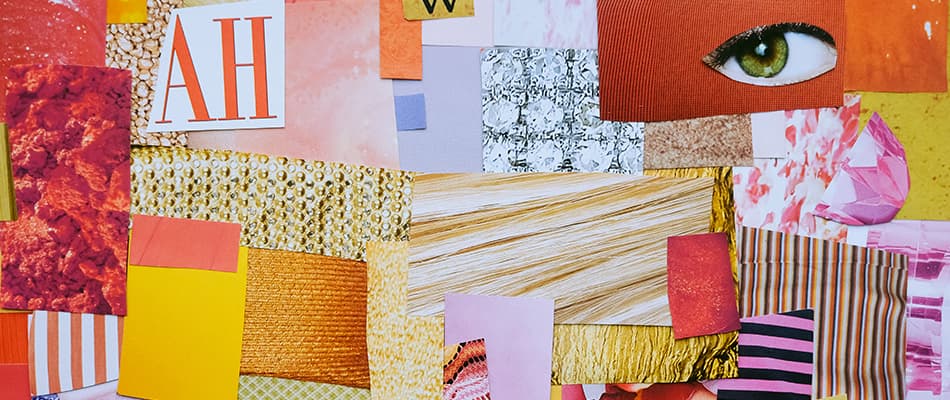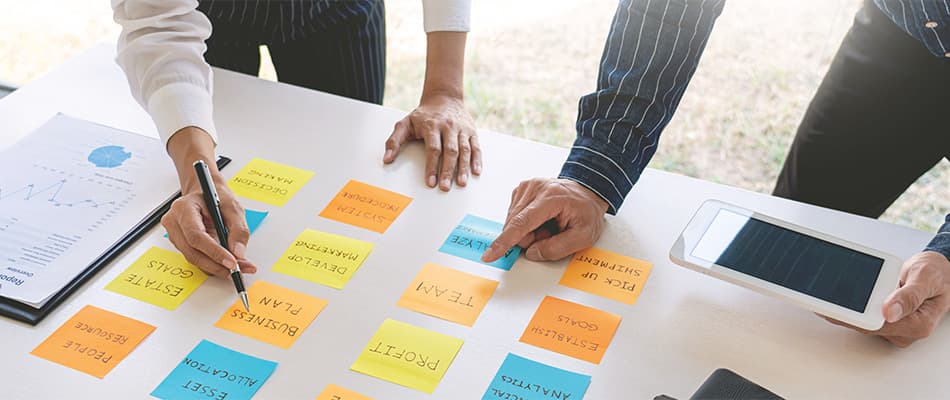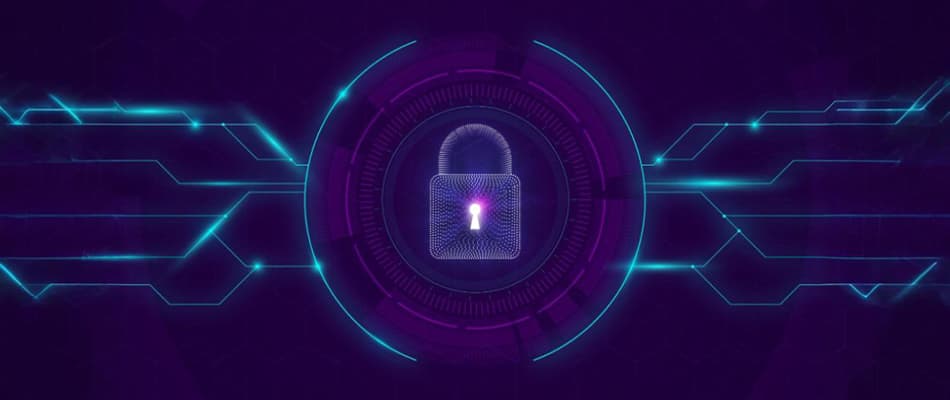What Is a Mood Board in Graphic Design? Detailed Explanation
In graphic design, effective visuals are essential for conveying ideas and capturing attention. For those aspiring to create impactful designs, understanding what is a mood board in graphic design is fundamental. Mood boards are collections of images, textures, colours, and typography used to express the overall visual style of a project. They act as a powerful tool for translating concepts into clear, visual language, making them essential for designers, clients, and teams.
When it comes to developing brand identities, marketing materials, or even website layouts, a well-crafted mood board makes the entire design fit well together. So, understanding its core components and importance in graphic design is important for professionals in this field.
In this article, we will explore what is a mood board in graphic design and how it can enhance your creative process.
What is a Mood Board In Graphic Design?
A mood board in graphic design is a visual tool that helps designers explore and communicate ideas, styles, and themes for a project. It is a collection of images, colours, textures, typography, and other visual elements arranged in a single space to inspire and guide the design process.
Mood boards can be physical, using materials like magazine cutouts or fabric swatches, or digital, created with tools like Adobe Photoshop, Canva, or Pinterest. Digital mood boards are flexible and easy to share.
Understanding what is a mood board in graphic design highlights its importance in establishing a foundation for creativity and alignment. Mood boards help designers clarify their vision and ensure that all stakeholders, whether clients, team members, or collaborators, share the same understanding of the project’s goals and aesthetic preferences.
A mood board in graphic design acts as a roadmap, helping refine ideas and ensuring designs reflect the desired tone. For example, when creating a brand identity, it captures the emotions, style, and feel the brand aims to convey, simplifying decisions and reducing misunderstandings.
Core Components of a Mood Board in Graphic Design
To deeply understand what is a mood board in graphic design, we must know the core components and their role. A well-crafted mood board includes several core components that bring clarity to the design process. The following are the main elements of a mood board, which provides a structure and direction to ensure the design stays focused on its intended message. :
- Images and Photographs: Images, including photographs, illustrations, or sketches, help to visually represent the theme or mood of the project.
- Colours and Colour Palettes: Colours are essential for creating a mood or feeling in design. A mood board often includes colour swatches or palettes to establish the desired emotions, such as warmth, elegance, or vibrancy.
- Typography: Typography refers to the fonts and text styles included on the mood board. It helps us understand what is a mood board in graphic design by visually expressing the tone and personality of the project. Whether it’s modern, playful, or professional, choosing the right fonts ensures that the design effectively communicates its message.
- Textures and Patterns: Textures and patterns add depth and character to a mood board. They can include anything from smooth marble textures to rough, earthy patterns, depending on the project’s theme.
- Icons and Graphics: Icons and small graphic elements provide additional detail and style. These components can represent specific ideas or serve as placeholders for visual motifs that will appear in the final design.
- Layouts and Composition Ideas: Layouts and composition ideas are vital for planning how the elements of a project will work together. They allow designers to experiment with the arrangement of components on the mood board and explore creative possibilities. Learning what a mood board is in graphic design helps us understand how various elements combine to form a functional design.
- Inspiration Words and Quotes: Some mood boards include short phrases, keywords, or quotes that summarise the theme or message of the project. These textual elements provide a clear narrative and help communicate the designer’s thought process.
Importance of a Mood Board in Graphic Design
Mood boards are essential in graphic design because they provide a focused direction for projects, allowing designers and clients to reach a shared understanding. By clarifying the overall aesthetic and emotional tone early in the process, mood boards help prevent miscommunication and reduce the risk of rework.
As we explore what is a mood board in graphic design, we learn that it fosters creativity by allowing designers to experiment with different styles and ideas before committing to a final design. This helps designers explore different possibilities, challenging traditional design limits while staying aligned with the client’s vision. Additionally, mood boards play a key role in brand development by creating a consistent visual style for marketing materials, websites, and other assets.
How to Make a Mood Board?
Creating a mood board requires a thoughtful approach to collecting and organising visual elements. While understanding what is a mood board in graphic design, here is a step-by-step guide to making an effective mood board to ensure a successful project:
- Define the Project Goals: Start by understanding the client’s needs, brand personality, and target audience. Clear objectives will help shape the mood board’s visual direction.
- Collect Visual Inspiration: Gather images, textures, colours, and fonts that align with the project goals. Resources like Pinterest, design magazines, and mood board creation platforms are excellent sources for finding inspiration.
- Curate and Organise Elements: Filter through the gathered elements, selecting only those that truly capture the desired mood. Ensure that each component, whether it be colours, images, or typography, adds value to the mood board.
- Arrange the Components: Arrange the selected elements cohesively on the board. This layout should make sense visually, guiding viewers through the mood, style, and tone of the design.
- Present the Mood Board: Share the mood board with clients or stakeholders for feedback. Use it as a discussion tool to refine the design direction and confirm that the vision aligns with client expectations.
Creating a mood board is both a practical and creative exercise that helps designers test concepts and gather input before advancing to the more detailed stages of graphic design.
Impact of a Mood Board in Graphic Designing
The use of mood boards can have a profound impact on the effectiveness of a graphic design project. They simplify complex ideas into visual representations, making it easier for designers to translate abstract concepts into specific design elements. This tool also promotes collaboration, ensures alignment on creative vision, and helps save time and resources.
- Simplifies abstract ideas into clear visual representations.
- Provides a clear reference for the creative workflow, saving time and resources.
- Enhances collaboration by aligning designers and teams on the creative vision.
- Improves client satisfaction by offering a preview of the design direction.
- Reduces the likelihood of inconsistencies and the need for multiple revisions.
- Helps students and professionals explore visual storytelling and cohesive design.
Learn Graphic Designing with Digital Regenesys
For aspiring designers looking to learn or improve their design skills, the UI/UX and Graphic Design Course with Gen AI, offered by Digital Regenesys, is an ideal online course. It covers all essential aspects of modern design. This course helps students understand what is a mood board in graphic design and what purpose it serves. Here are the key reasons why you must choose this course for your graphic design learning:
- Detailed Combined Learning: This course is one of the few available that combines both UI/UX and graphic design training in a single offering.
- Practical Experience: The course provides hands-on projects, ensuring students gain practical knowledge and apply their skills effectively.
- Flexibility: With an online format, the course offers flexible schedules to suit students’ learning needs and lifestyles.
- Recognised Certification: Upon completion, students receive a certification that is industry-recognised and adds value to their career profiles
- Expert Faculty: The course is taught by experienced professionals who guide students through essential skills and techniques.
In conclusion, mood boards are an essential aspect of graphic design, providing designers with a structured way to explore, define, and communicate their creative ideas. By understanding what is a mood board in graphic design, you will learn how to incorporate images, colours, typography, and textures in mood boards to bring clarity and alignment to design projects. Whether you’re working on brand identity, digital marketing materials, or web design, a mood board can enhance the design process by providing clear direction and inspiring creativity.
For those interested in learning graphic design, check out the Digital Regenesys website to learn about our detailed UI/UX and Graphic Design Course with GenAI.
FAQs on What is a Mood Board In Graphic Design
Why are mood boards important in graphic design?
Mood boards are vital for establishing a cohesive design vision, preventing miscommunication, and saving time by aligning designers and clients before the actual design process begins.
How do I start making a mood board?
Start by defining your project’s goals, gathering visual inspiration, curating elements that match the desired aesthetic, and arranging them cohesively on the board.
What is a mood board in graphic design?
A mood board is a collection of visual elements such as images, colours, fonts, and textures that define the style and mood of a design project. It helps communicate the creative vision and align stakeholders in a shared visual direction.
What tools can I use to create a mood board?
Tools like Canva, Figma, Adobe Photoshop, and Pinterest are popular choices for creating mood boards due to their design and organisational features.
How can I learn graphic design?
Enrolling in structured courses like the UI/UX and Graphic Design Course with GenAI at Digital Regenesys can provide in-depth training, covering everything from design basics to advanced techniques and industry tools.














